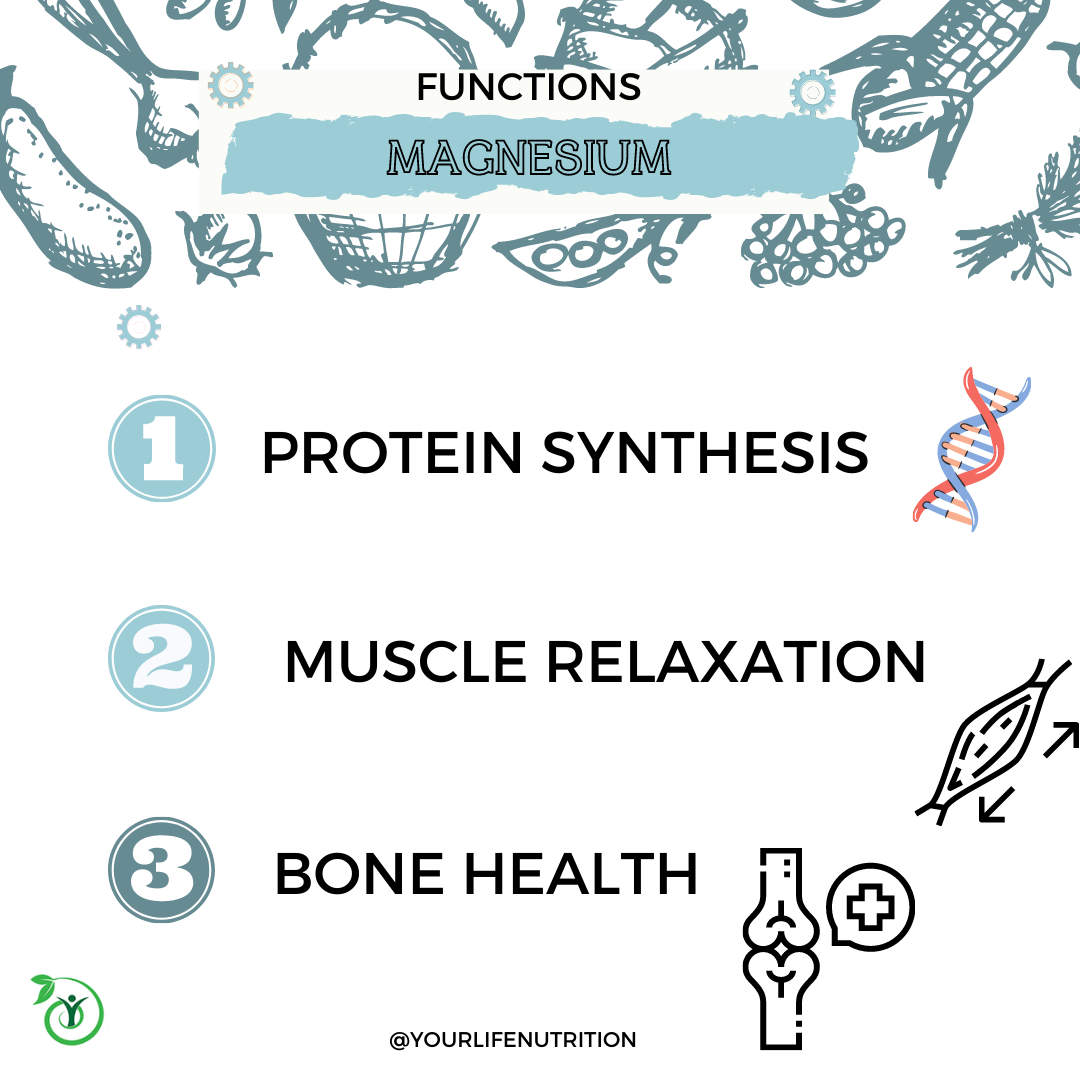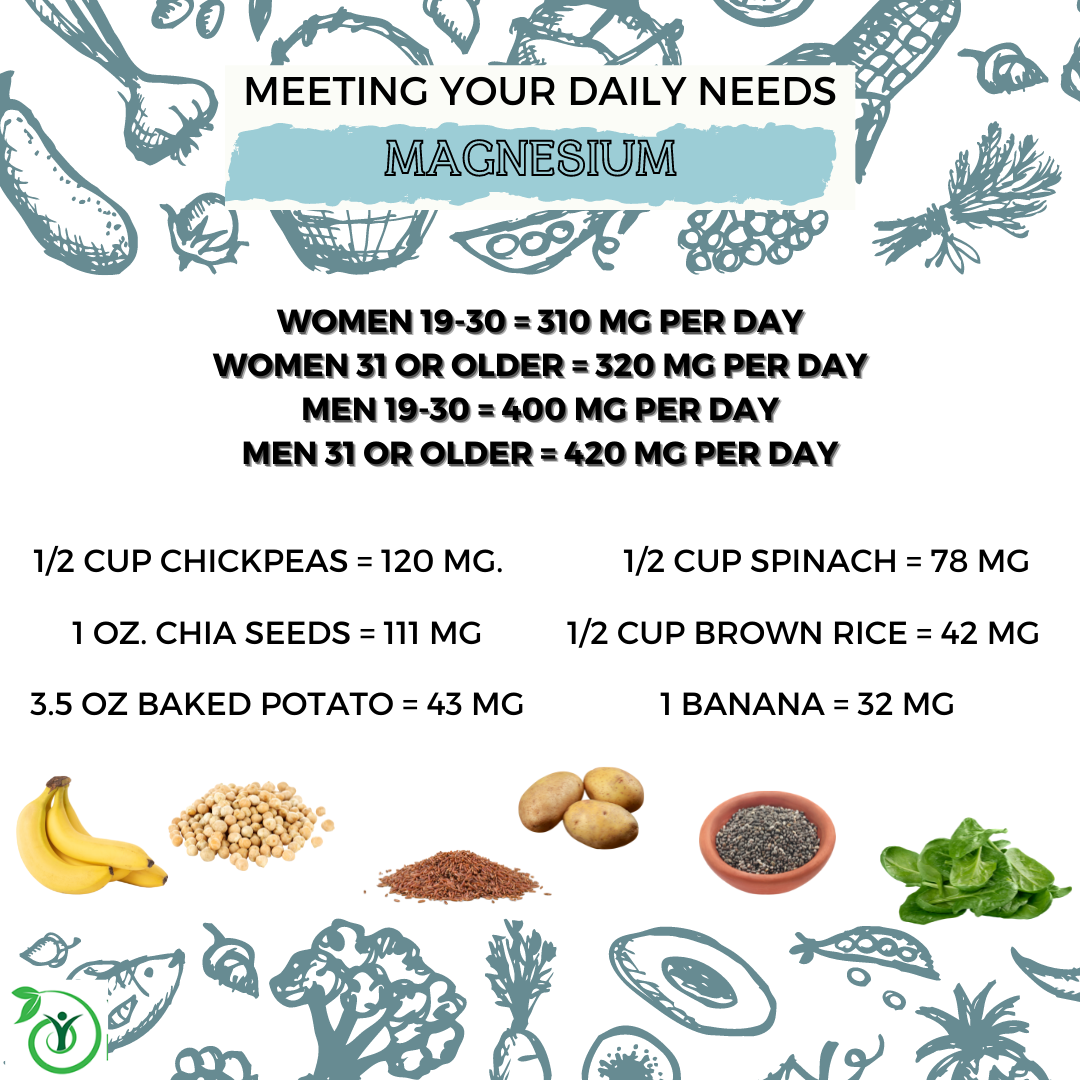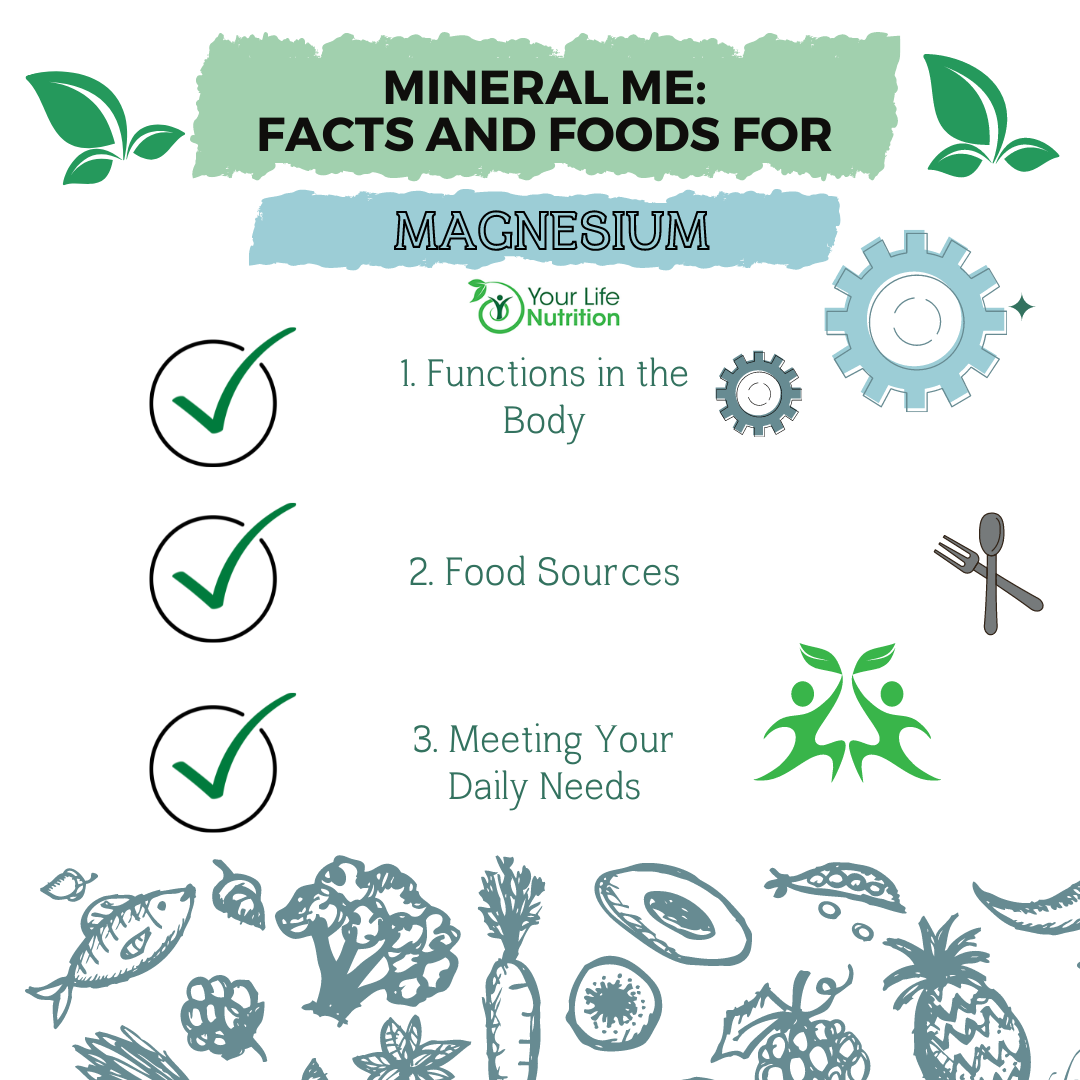Buckle up because we are about to discuss a very busy mineral in the body, magnesium. If you recall from a few blogs back, we talked about coenzymes and how important they are in getting reactions to their destination on time just as a copilot helps fly a plane long distance in a faster amount of time. Well, magnesium is another very important copilot in our bodies and acts as a coenzyme for over 300 different chemical reactions.1 Some of these reactions are involved in protein synthesis, muscle and nerve function, blood glucose control, blood pressure regulation, and it is also important for energy production, oxidative phosphorylation, and glycolysis.1 These are just fancy ways to say magnesium helps our bodies exchange nutrients for the body’s energy currency, which is known as ATP.1 In addition to all of this, magnesium is a construction worker for the development of bones, it helps synthesize DNA, RNA, and the antioxidant glutathione, it participates in the active transport of calcium, sodium, and potassium ions in and out of the cell, and it helps keep your heart beating normally.1

With so many functions, one might suspect magnesium has a few common areas to hang out at in the body and you would be correct.1 Over half of this mineral can be found in the bones, a large portion is in soft tissues, and only about 1 % in found in the blood.1 This blood magnesium is actually very tightly controlled with the help of the kidneys in excretion around 120 mg through the urine every day.1 Since this is an essential mineral, meaning the body cannot make it so we must get it through the diet, the body is pretty vocal when stores are getting low which may resemble muscle cramps, tension, headaches, and unrest.2

Since magnesium levels are under constant supervision, the dietary reference intakes are a bit lower than some of the other nutrients we discussed.1 Women ages 19-30 years old should be getting 310 mg per day, men 19-30 should be getting 400 mg per day, females ages 31 and older are recommended to have 320 mg per day, and men ages 31 and older should aim for 420 mg per day.1

Here are some examples of foods with magnesium:
- Pumpkin Seeds = 156 mg per 1 oz.
- Chickpeas = 120 mg per ½ cup
- Chia Seeds = 111 mg per 1 oz.
- Almonds = 80 mg per oz.
- Spinach = 78 mg per ½ cup
- Cashews = 74 mg per oz.
- Soymilk = 61 mg per cup
- Black beans = 60 mg per ½ cup
- Edamame = 50 mg per ½ cup
- Potato = 43 mg per 3.5 oz. with skin
- Brown Rice = 42 mg per ½ cup
- Banana = 32 mg per fruit
- Salmon = 26 mg per 3 oz.
- Milk = 24-27 mg per cup
- Avocado = 22 mg per ½ cup

Magnesium supplementation is common, however not all supplements get absorbed efficiently.1 The best absorbed form of magnesium is from a form that can readily dissolve in liquid.1 Oftentimes, magnesium is taken as a supplement to better sleep habits due to its role in regulating nerve transmission and the neurotransmitters that play a part of sleep.3 Magnesium is an antagonist to calcium which is how it is able to relax the muscles.2 When membranes are permeable it leaves the door open for calcium, sodium, and potassium to leave the cell.2 Since these minerals excite the nerves, they keep the muscles from being able to relax.2 When we have adequate magnesium levels, the permeability for these nutrients is more limited so we are not constantly getting impulses to move our muscles.2 There is little evidence supporting the addition of magnesium supplementation to improve sleep, however magnesium levels in the body are highly regulated and generally safe to take as most Americans are not reaching their daily needs through the diet.3 Some medications may interact negatively with this supplementation so if you are considering taking one it is always advised to talk with your primary care physician first.3 Magnesium oxide is not recommended due to its function as a stool softener, so individuals looking to incorporate magnesium supplement should look for glycinate and citrate based products.3
As you can see magnesium is quite the busy mineral. With its help in energy metabolism, chemical reactions, development of bones, synthesis of DNA, RNA, and the antioxidant glutathione, active transport of calcium and potassium ions in and out of the cell, keeping your heart beating normally, and so much more it is no surprise the body takes such a priority in regulating levels present in the body. It is always important to provide these high functioning minerals in good supply, so eating a diet rich in these foods will help keep your body ready to continue its amazing work.
References:
- Office of dietary supplements – magnesium. NIH Office of Dietary Supplements. https://ods.od.nih.gov/factsheets/Magnesium-HealthProfessional/#:~:text=Magnesium%20is%20a%20cofactor%20in,%2C%20oxidative%20in phosphorylation%2C%20and%20glycolysis. Accessed February 8, 2022.
- Magnesium – all-rounder for muscles, nerves, Heart & Bones. Denk Nutrition. https://www.denk-nutrition.de/en/guidebooks/magnesium-all-rounder-for-muscles-nerves-heart-bones/. Published November 14, 2019. Accessed February 9, 2022.
- Hortonj4. Does magnesium help you sleep? Cleveland Clinic. https://health.clevelandclinic.org/does-magnesium-help-you-sleep/. Published June 28, 2021. Accessed February 9, 2022.
Post created by the University of Akron dietetic intern: Michaela Campbell





